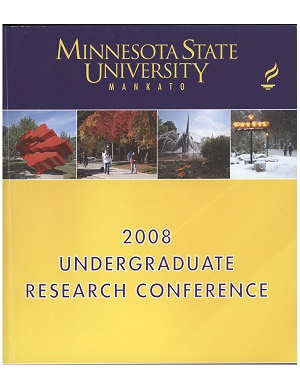Develop a Matlab Based Mode Solver for Asymmetric Nano-Scale Void Slab Slot Waveguides.
Location
CSU 284
Start Date
21-4-2008 8:00 AM
End Date
21-4-2008 10:00 AM
Student's Major
Electrical and Computer Engineering and Technology
Student's College
Science, Engineering and Technology
Mentor's Name
Qun Zhang
Mentor's College
Science, Engineering and Technology
Description
Silicon photonics is a promising field because it enables the next generation computing by providing high speed optical communications among dozens and even hundreds of computing cores within a single processor. One key device in these micro/nano-scale on-chip communication systems is the waveguide, which must be used to guide and route light on the silicon chip. However, the conventional waveguide cannot be used because of its large size. Fortunately, in 2004 Almeida et. al. from Cornell University proposed a novel nanostructure to guide light through nano-scale void slots or simply air gaps. Recently, Professor Zhang in MSU Mankato and his collaborators from Georgetown University have developed an analytical formulation, and successfully extended the symmetric waveguide structure proposed by Almeida to asymmetric case. This is significant because asymmetric waveguides have better light confinement compared to symmetric waveguides especially when there is bending (bending is essential in routing the light.) We have implemented a mode solver using Matlab and were able to obtain the effective refractive indices as well as the transversal electrical modal field profile of the guiding TM modes. A Newton Raphson algorithm was used for the calculation so our mode solver has a very high computational efficiency. In this proposed presentation, we describe in detail the waveguide structure and the formulae derived by Zhang et. al. and show step by step, how to find the fundamental guiding mode. Finally, we present the calculated electrical modal field profile using an example of air-silicon-air-silicon-air nanostructure.
Develop a Matlab Based Mode Solver for Asymmetric Nano-Scale Void Slab Slot Waveguides.
CSU 284
Silicon photonics is a promising field because it enables the next generation computing by providing high speed optical communications among dozens and even hundreds of computing cores within a single processor. One key device in these micro/nano-scale on-chip communication systems is the waveguide, which must be used to guide and route light on the silicon chip. However, the conventional waveguide cannot be used because of its large size. Fortunately, in 2004 Almeida et. al. from Cornell University proposed a novel nanostructure to guide light through nano-scale void slots or simply air gaps. Recently, Professor Zhang in MSU Mankato and his collaborators from Georgetown University have developed an analytical formulation, and successfully extended the symmetric waveguide structure proposed by Almeida to asymmetric case. This is significant because asymmetric waveguides have better light confinement compared to symmetric waveguides especially when there is bending (bending is essential in routing the light.) We have implemented a mode solver using Matlab and were able to obtain the effective refractive indices as well as the transversal electrical modal field profile of the guiding TM modes. A Newton Raphson algorithm was used for the calculation so our mode solver has a very high computational efficiency. In this proposed presentation, we describe in detail the waveguide structure and the formulae derived by Zhang et. al. and show step by step, how to find the fundamental guiding mode. Finally, we present the calculated electrical modal field profile using an example of air-silicon-air-silicon-air nanostructure.
Recommended Citation
Hathiwala, Murtaza; Abidhussein Esmail; and Gayan Wijeratne. "Develop a Matlab Based Mode Solver for Asymmetric Nano-Scale Void Slab Slot Waveguides.." Undergraduate Research Symposium, Mankato, MN, April 21, 2008.
https://cornerstone.lib.mnsu.edu/urs/2008/oral-session-02/5



